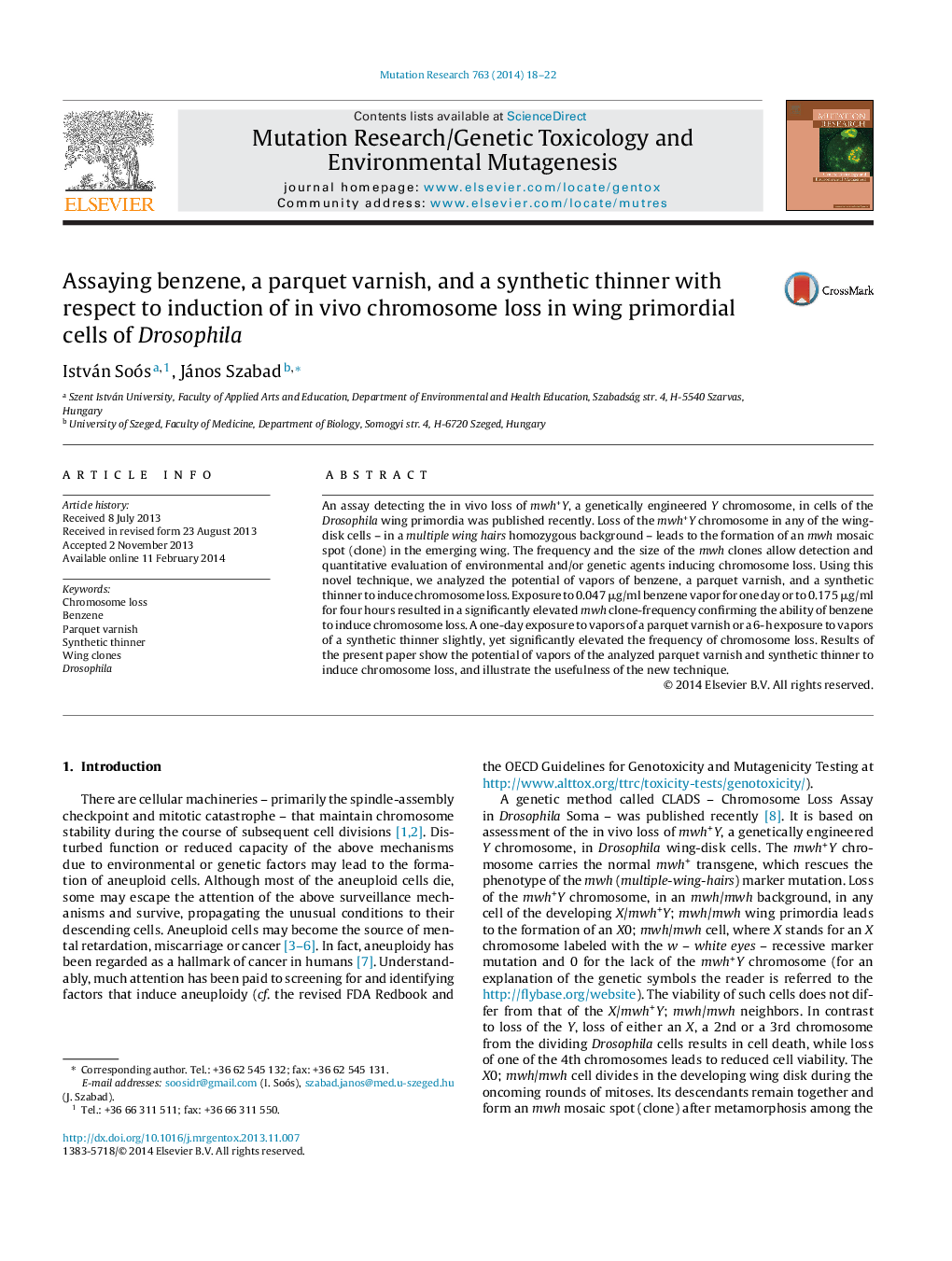| Article ID | Journal | Published Year | Pages | File Type |
|---|---|---|---|---|
| 8456478 | Mutation Research/Genetic Toxicology and Environmental Mutagenesis | 2014 | 5 Pages |
Abstract
An assay detecting the in vivo loss of mwh+Y, a genetically engineered Y chromosome, in cells of the Drosophila wing primordia was published recently. Loss of the mwh+Y chromosome in any of the wing-disk cells - in a multiple wing hairs homozygous background - leads to the formation of an mwh mosaic spot (clone) in the emerging wing. The frequency and the size of the mwh clones allow detection and quantitative evaluation of environmental and/or genetic agents inducing chromosome loss. Using this novel technique, we analyzed the potential of vapors of benzene, a parquet varnish, and a synthetic thinner to induce chromosome loss. Exposure to 0.047 μg/ml benzene vapor for one day or to 0.175 μg/ml for four hours resulted in a significantly elevated mwh clone-frequency confirming the ability of benzene to induce chromosome loss. A one-day exposure to vapors of a parquet varnish or a 6-h exposure to vapors of a synthetic thinner slightly, yet significantly elevated the frequency of chromosome loss. Results of the present paper show the potential of vapors of the analyzed parquet varnish and synthetic thinner to induce chromosome loss, and illustrate the usefulness of the new technique.
Keywords
Related Topics
Life Sciences
Biochemistry, Genetics and Molecular Biology
Cancer Research
Authors
István Soós, János Szabad,
